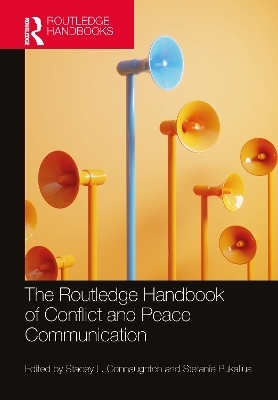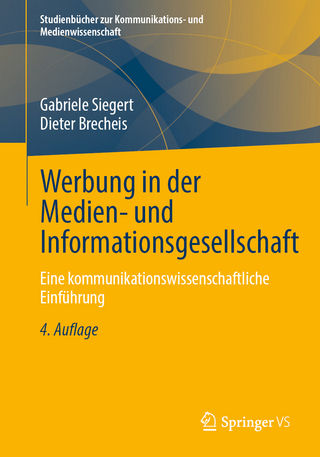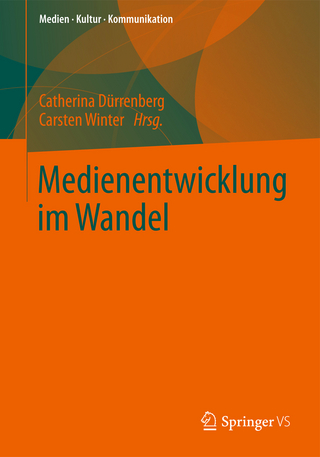
The Routledge Handbook of Conflict and Peace Communication
Routledge (Verlag)
978-1-032-49048-9 (ISBN)
The volume brings together peace studies, conflict studies, and communication studies to acknowledge the power of communication—both cooperative, solidarizing, and integrative as well as destructive and divisive—in constituting social relations. It features a multiplicity of authors, including academics and practitioners from all corners of the globe and from across the communicative spectrum. The handbook is divided into four parts: (1) Meta-theoretical, theoretical, and methodological approaches in conflict and peace communication research; (2) Conflict communication; (3) Peace communication; and (4) Cross-cutting and emergent themes.
This handbook is essential reading for scholars, research-driven practitioners, graduate-level students, and upper-level undergraduate students in conflict and peace communication within disciplines such as communication studies, political science, international relations, security studies, and human rights.
Stacey L. Connaughton is Professor in The Brian Lamb School of Communication and the Director of the Purdue Policy Research Institute at Purdue University, USA. Stefanie Pukallus is Professor of Public Communication and Civil Development at the School of Journalism, Media and Communication at the University of Sheffield, UK. She is also the Founding Chair of the Hub for the Study of Hybrid Communication in Peacebuilding.
Foreword Melanie Greenberg Introduction Stacey L. Connaughton and Stefanie Pukallus Part I: Meta-theoretical, Theoretical, and Methodical Approaches in Conflict and Peace Communication 1. Post-positivist approaches to conflict and peace communication research Kai Kuang, Prudence Mbah, and Qiupeng Wang 2. Interpretivist/social constructionist approaches to conflict and peace communication research Jennifer K. Ptacek 3. Critical perspectives on conflict and peace communication research Stacey L. Connaughton 4. Networks approaches to conflict and peace communication Munira Mustaffa and Ayse Lokmanoglu 5. Participatory (action) & community-based research Juan Mario Diaz-Arevalo and Adriel Ruíz-Galván 6. Genocide warning systems: Building capacity for preventing mass atrocities Nat B. Walker 7. Monitoring journalism safety Manizja Aziz and Leon Willems 8. Connecting evidence to practice: The development of the Better Evidence Project Jeff Helsing and Ziad Al Achkar 9. Predictors of armed intergroup-conflicts: An overview of risk factors Torsten Reimer, Christopher R. Roland, Jennifer K. Ptacek, Arunima Krishna, and Stacey L. Connaughton Part II: Conflict Communication 10. The three communicative dimensions of hate speech Stefanie Pukallus 11. The rise of propaganda and disinformation since the First World War Edward Corse 12. Culture wars and hyperpartisan news Jeremy Castle and Kyla Stepp 13. Bringing conflict back in: Computational propaganda and totalitarian political communication in Brazil Andrew Rodarte and Samuel Woolley 14. Civil actors under attack: Digital authoritarianism and the weaponization of social media Marc Owen Jones 15. Social media as a conflict driver and a tool of participatory conflict communication Alexandra Pavliuc 16. Extremism, the extreme right and conspiracy myths on social media Julia Ebner and Jakob Guhl 17. Aggressive communication online: From familiar anti-women sentiments to misogyny influencers and male supremacism in the manosphere Allysa Czerwinsky 18. From conflict to collaboration: solidarity and compromise in trans and women’s movements Kat Gupta and Ruth Pearce 19. Dehumanising and intimidating imagery in cartoons and caricatures James Whitworth 20. The communication of values through hostile architecture Robert Rosenberger 21. The clash of two sacred values: Freedom of expression versus religious respect Javier Garcia Oliva and Helen Hall Part III: Peace Communication 22. The relevance of communicative peacebuilding: civil norm building and discursive civility Stefanie Pukallus 23. The transformative capacity of communication for social change and peacebuilding Michael Papa and Andrew Papa 24. Peace through the media? A historical outline of the UN’s peace-related media policies and activities Roja Zaitoonie 25. Digital media and information literacy Dareen Al-Khoury 26. The civil global news-scape Jackie Harrison 27. Exemplifying peaceful cooperation through news journalism Tetyana Gordiienko 28. Envisioning environmental journalism as a mediating tool in cultural conflict Meli M. Ncube and Bruce Mutsvairo 29. Peace education for deradicalization Dody Wibowo and Zahid Shahab Ahmed 30. Building citizens’ values: Peace through sports Wyclife Ong’eta Mose 31. Youth-led media in refugee camps: From marginalisation to inclusion through young people’s productions Valentina Baú 32. Audio-visual media: Documentary filmmaking Jaremey R. McMullin and Evelyn Pauls 33. The value of TV & radio soap opera in peacebuilding Francis Rolt 34. Poetry and folktales in peacebuilding Jesse Matas 35. Peacebuilding in conflict and post-conflict narratives Heike Härting 36. Peace photography, visual peacebuilding and participatory peace photography Rasmus Bellmer, Tiffany Fairey, and Frank Möller 37. Graffiti and street art in peacebuilding Marie Migeon and Birte Vogel 38. The physical and fictional memorialisation of history: Sheffield’s Women of Steel Michelle Rawlins 39. Embodied peacemaking: The role of dance in communicative strategies for conflict mediation and resolution Beatrice Jarvis 40. Music in/for peace April Morris Part IV: Cross-Cutting and Emergent Themes 41. Freedom to flourish: A systematic review of the literature at the intersection of resilience, communication, and peacebuilding Bedadyuti Jha & Ryan Funkhouser 42. Communicating for well-being: Overlapping principles in peace and health communication Yara M. Asi 43. Resilience nexus: Climate change, food security, conflict, and peace communication Sisira Madurapperuma, Dilanthi Amaratunga, and Richard Haigh 44. Building a just world through Peace Linguistics: Decolonizing and de-gendering communication Kaukab Saba
| Erscheinungsdatum | 18.09.2024 |
|---|---|
| Reihe/Serie | Routledge Handbooks in Communication Studies |
| Zusatzinfo | 6 Tables, black and white; 3 Line drawings, black and white; 22 Halftones, black and white; 25 Illustrations, black and white |
| Verlagsort | London |
| Sprache | englisch |
| Maße | 178 x 254 mm |
| Gewicht | 1020 g |
| Themenwelt | Geisteswissenschaften ► Geschichte |
| Sozialwissenschaften ► Kommunikation / Medien ► Kommunikationswissenschaft | |
| Sozialwissenschaften ► Kommunikation / Medien ► Medienwissenschaft | |
| Sozialwissenschaften ► Politik / Verwaltung ► Europäische / Internationale Politik | |
| ISBN-10 | 1-032-49048-9 / 1032490489 |
| ISBN-13 | 978-1-032-49048-9 / 9781032490489 |
| Zustand | Neuware |
| Informationen gemäß Produktsicherheitsverordnung (GPSR) | |
| Haben Sie eine Frage zum Produkt? |
aus dem Bereich


